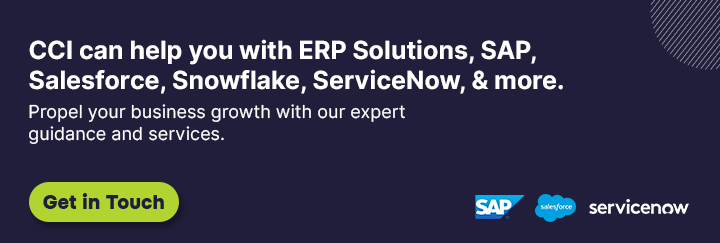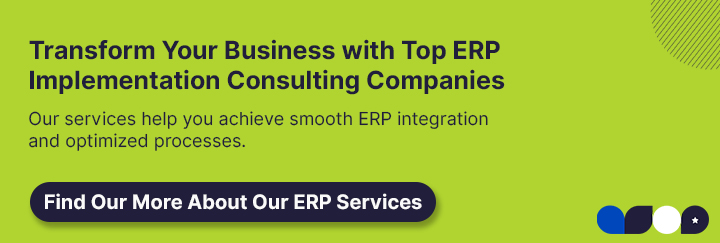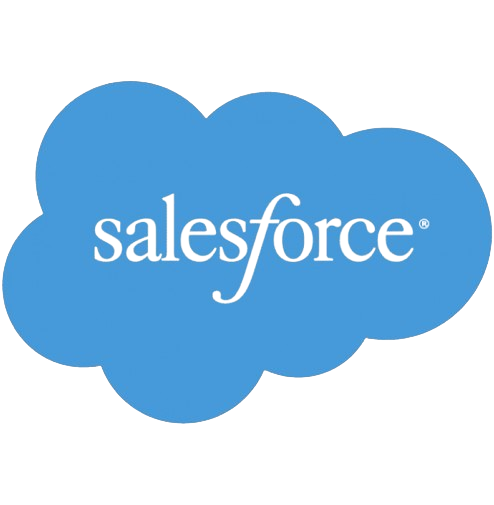10 Salesforce Data Migration Tools You Should Know in 2025
Updated on December 24, 2025
In 2025, Salesforce remains the leading CRM platform, enabling businesses to manage customer data, streamline operations, and drive growth. However, migrating data to or from Salesforce, whether from legacy systems, other CRMs, or between Salesforce instances, can be complex.
The right data migration tools simplify this process, ensuring accuracy, security, and efficiency. These tools, ranging from native Salesforce solutions to advanced third-party ETL platforms, cater to diverse needs, from small-scale imports to enterprise-level migrations.
>> Related Post: Salesforce Service Cloud Einstein AI: Features, Benefits & Pricing
Why Salesforce Data Migration Tools Matter
Data migration is critical when adopting Salesforce, consolidating data, or upgrading systems. Effective tools automate data extraction, transformation, and loading (ETL), ensuring compliance with GDPR, CCPA, and industry standards like HIPAA.
They also reduce manual effort. Whether migrating from Excel, legacy CRMs, or cloud platforms, choosing the right tool depends on data volume, complexity, and integration needs.
>> Related Post: Top 5 Salesforce Best Practices to Boost Your CRM Efficiency in 2025
Top 10 Salesforce Data Migration Tools for 2025:
1. Salesforce Data Loader
- Description: A native Salesforce tool for bulk data import/export, supporting up to 5 million records. Available for Enterprise, Performance, Unlimited, and Developer editions.
- Key Features:
- User-friendly GUI and command-line interface (CLI) for Windows.
- Supports all standard and custom objects with operations like insert, update, delete, and upsert.
- Generates CSV logs for success/error tracking.
- Best For: Admins and developers handling large-scale migrations with CSV files or database connections (e.g., Snowflake, Zendesk).
- Pros: Free, secure, versatile.
- Cons: Requires technical expertise for CLI; no real-time sync.
2. Salesforce Data Import Wizard
- Description: A built-in, browser-based tool for importing up to 50,000 records, ideal for small to medium datasets.
- Key Features:
- Supports standard objects (Accounts, Contacts, Leads, Solutions) and custom objects.
- Guided setup with auto-mapping for CSV fields.
- Duplicate detection during imports.
- Best For: Non-technical users managing smaller migrations without complex transformations.
- Pros: Free, user-friendly, no installation needed.
- Cons: Limited to 50,000 records; no delete or export options.
3. Unito
- Description: A no-code, two-way integration platform for synced migrations between Salesforce and tools like HubSpot, Jira, or ServiceNow.
- Key Features:
- Real-time, bi-directional data sync for progressive migrations.
- Customizable field mappings and rules.
- Supports cases, contacts, leads, and 50+ tools.
- Best For: Businesses needing gradual migrations with team training overlap.
- Pros: Deep two-way sync, flexible.
- Cons: Subscription-based; not ideal for one-off migrations.
4. Jitterbit Data Loader
- Description: A free (up to 100 operations/month) cloud-based tool by MuleSoft for Salesforce data migration with a drag-and-drop interface.
- Key Features:
- Automates and schedules migrations for recurring tasks.
- Supports complex field mappings and data transformations.
- Integrates with external systems like SAP or ERP.
- Best For: Businesses needing automated, repeatable migrations with moderate complexity.
- Pros: Free tier, intuitive.
- Cons: Paid plans are required for high-volume tasks.
5. Talend Open Studio for Data Integration
- Description: An open-source ETL tool with a robust IDE for integrating Salesforce with data warehouses and other systems.
- Key Features:
- Supports data mapping, aggregation, sorting, and enrichment.
- Built-in Salesforce connectors for seamless integration.
- Handles complex transformations for large datasets.
- Best For: Enterprises with advanced integration needs and technical expertise.
- Pros: Free, powerful for complex migrations.
- Cons: Steep learning curve; complex UI.
6. IsyncSF
- Description: A native Salesforce app for migrations between Salesforce orgs or external systems, with data cleansing and metadata management.
- Key Features:
- Supports file/attachment migration and data masking.
- Offers migration templates and customizable test environments.
- Detailed logging for compliance and troubleshooting.
- Best For: Organizations needing secure, metadata-driven migrations between Salesforce instances.
- Pros: Native integration, compliance-focused.
- Cons: Paid; less suited for non-Salesforce sources.
7. Astera
- Description: An AI-powered ETL tool for Salesforce migrations, supporting one-off and ongoing integrations with enterprise systems like SAP.
- Key Features:
- AI-driven data mapping and anomaly detection.
- Supports real-time and batch migrations.
- Integrates with cloud and on-premises systems.
- Best For: Enterprises with complex, large-scale migrations requiring AI automation.
- Pros: AI automation and versatile.
- Cons: Costly for smaller businesses.
8. Xappex
- Description: A powerful Salesforce data management tool that integrates directly with Excel and Google Sheets, enabling bulk imports, exports, and updates without leaving your spreadsheet environment.
- Key Features:
- Integrates with Excel and Google Sheets for direct Salesforce connectivity
- Supports bulk operations such as insert, update, upsert, delete, undelete, and merge
- Enables saved mappings and automation for recurring import and export tasks
- Provides admin-friendly permissions and governance for secure data handling
- Offers high-performance processing for large datasets
- Best For: Salesforce admins and business users needing secure data operations.
- Pros: Intuitive, supports diverse operations, strong AppExchange ratings.
- Cons: Primarily focused on Salesforce, requires a subscription for advanced features.
9. Hevo Data
- Description: A cloud-based ETL platform for automated Salesforce data migration with real-time replication.
- Key Features:
- Pre-built connectors for Salesforce, Redshift, and PostgreSQL.
- Automated data transformation and schema mapping.
- Pay-as-you-go pricing with serverless architecture.
- Best For: Businesses needing real-time sync and minimal manual effort.
- Pros: Automated, scalable.
- Cons: Subscription-based; complex setup for beginners.
10. Skyvia
- Description: A cloud-based solution for Salesforce data migration, replication, and synchronization, with a free tier for up to 10,000 records/month.
- Key Features:
- Visual configuration for import, export, and sync.
- Supports data replication and bi-directional sync.
- No local software required; browser-based.
- Best For: SMBs needing cost-effective, simple migrations.
- Pros: Free tier, user-friendly.
- Cons: Limited advanced features in the free plan.
>> Related Post: Salesforce Sales Cloud Einstein AI: Features, Benefits & Pricing
How to Choose the Right Salesforce Data Migration Tool
Selecting the best tool depends on your business needs:
- Data Volume: Use Data Import Wizard for <50,000 records; Data Loader or Talend for millions.
- Complexity: Choose Astera or IsyncSF for complex transformations; Impwr or Skyvia for simpler tasks.
- Real-Time Needs: Opt for Unito or Hevo for bi-directional sync; Jitterbit for scheduled migrations.
- Budget: Leverage free tools like Data Loader or Skyvia; invest in Astera for enterprise needs.
- Compliance: Prioritize IsyncSF or Data Loader for GDPR/CCPA compliance.
- Technical Expertise: Use Impwr or Data Import Wizard for non-technical users; Talend for developers. CCI’s advisory services help assess requirements, ensuring the right tool aligns with your goals.
>> Related Post: 5 Benefits of Agentforce for Businesses/Startups in 2025
Best Practices for Salesforce Data Migration
To ensure success, follow these CCI-guided best practices:
- Plan Thoroughly: Define objectives, timelines, and dependencies, as poor planning causes migration failures, per Salesforce Ben.
- Back Up Data: Use SysCloud or AppExchange tools to back up data, preventing loss.
- Cleanse Data: Remove duplicates and standardize formats to improve data quality.
- Map Fields Accurately: Create templates to align source and Salesforce fields, reducing errors.
- Test in Sandbox: Run pilot migrations to identify issues before production.
- Validate Post-Migration: Use reports and SOQL queries to verify data integrity.
>> Related Post: Scaling Your Business with 5 CRM Best Practices in 2025
Salesforce Professional Services Offered by Cloud Consulting Inc.
At Cloud Consulting Inc., we are dedicated to turning your business aspirations into reality through our comprehensive Salesforce services:
>> Related Post: Salesforce Agentforce and AI: Trends & Industries to Watch in 2025
Conclusion
Effective Salesforce data migration in 2025 demands the right tools to ensure accuracy, security, and scalability. From native solutions like Data Loader and Data Import Wizard to advanced platforms like Unito, Astera, and Skyvia, these 10 tools cater to diverse needs, from small-scale imports to complex enterprise migrations. By following best practices and choosing the appropriate tool, businesses can reduce errors, save time, and achieve seamless transitions.
Partnering with Cloud Consulting Inc. ensures expert guidance, leveraging CCI’s expertise and Integrow to deliver tailored, high-impact migrations.
FAQs
1. What is the best tool for small Salesforce migrations?
Salesforce Data Import Wizard or Skyvia are ideal for up to 50,000 records due to their simplicity and free tiers.
2. Are there free Salesforce migration tools?
Yes, Salesforce Data Loader, Data Import Wizard, and Skyvia (free tier) are cost-effective options.
3. How does CCI ensure migration success?
CCI conducts audits, cleanses data, maps fields, and tests in sandboxes, ensuring the highest possible data accuracy.
4. Can these tools handle compliance requirements?
Tools like IsyncSF and Data Loader include encryption and logging to meet GDPR, CCPA, and HIPAA standards.









